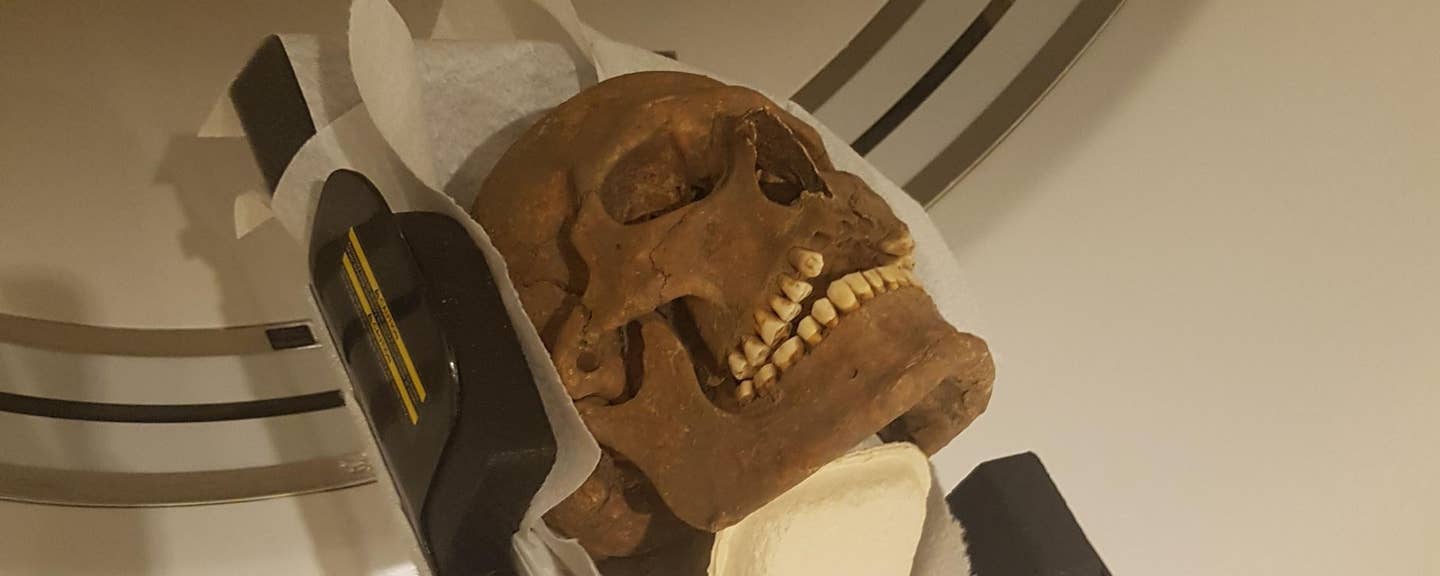Scientists reverse hair loss due to both male and female pattern baldness
Many over-the-counter remedies are available, but most of them don’t focus on the primary causes: oxidative stress and poor circulation.

[Mar. 8, 2023: Fangyuan Li, American Chemical Society]
The most common hair loss condition is called androgenic alopecia, also known as male- or female- pattern baldness. (CREDIT: Creative Commons)
Although some people say that baldness is the “new sexy,” for those losing their hair, it can be distressing. An array of over-the-counter remedies are available, but most of them don’t focus on the primary causes: oxidative stress and insufficient circulation.
Now, researchers reporting in ACS Nano have designed a preliminary microneedle patch containing cerium nanoparticles to combat both problems, regrowing hair in a mouse model faster than a leading treatment.
The most common hair loss condition is called androgenic alopecia, also known as male- or female- pattern baldness. Hair loss is permanent for people with the condition because there aren’t enough blood vessels surrounding the follicles to deliver nutrients, cytokines and other essential molecules.
In addition, an accumulation of reactive oxygen species in the scalp can trigger the untimely death of the cells that form and grow new hair.
Related Stories:
Previously, Fangyuan Li, Jianqing Gao and colleagues determined that cerium-containing nanoparticles can mimic enzymes that remove excess reactive oxygen species, which reduced oxidative stress in liver injuries, wounds and Alzheimer’s disease.
However, these nanoparticles cannot cross the outermost layer of skin. So, the researchers wanted to design a minimally invasive way to deliver cerium-containing nanoparticles near hair roots deep under the skin to promote hair regrowth.
As a first step, the researchers coated cerium nanoparticles with a biodegradable polyethylene glycol-lipid compound. Then they made the dissolvable microneedle patch by pouring a mixture of hyaluronic acid — a substance that is naturally abundant in human skin — and cerium-containing nanoparticles into a mold.
Abstract: The dysregulation of the hair follicle niche induced by excessive reactive oxygen species (ROS) and insufficient vascularization in the perifollicular microenvironment is the leading cause of AGA. (CREDIT: ACS Publications)
The team tested control patches and the cerium-containing ones on male mice with bald spots formed by a hair removal cream. Both applications stimulated the formation of new blood vessels around the mice’s hair follicles.
However, those treated with the nanoparticle patch showed faster signs of hair undergoing a transition in the root, such as earlier skin pigmentation and higher levels of a compound found only at the onset of new hair development. These mice also had fewer oxidative stress compounds in their skin.
Preparation process of a dissolvable and detachable MNspatch. First, 0.05 mL of hyaluronic acid (HA) solution containing CeNZs was deposited on the PDMS micromold. The PDMS micromoldwas centrifugedat 4000 rpm for 5 min to force the mixture into the needle voids, followed by theremoval of the excessive solution outside the cavities viaa plastic scraper. The PDMS micromold containing CeNZs/HA solutionwaskept in a desiccator at room temperature for 2h. Then,0.05 mL of polyvinylpyrrolidoneK90 (PVP K90) solution was added onto the micromold. The PDMS micromold wascentrifugedat4000 rpm for 3 min to form the backing layer and was driedat room temperature. Finally, the Ce-MNs patch was detached from the PDMS micromold after complete desiccation. (CREDIT: ACS Publications)
Finally, the researchers found that the cerium-containing microneedle patches resulted in faster mouse hair regrowth with similar coverage, density and diameter compared with a leading topical treatment and could be applied less frequently.
Microneedle patches that introduce cerium nanoparticles into the skin are a promising strategy to reverse balding for androgenetic alopecia patients, the researchers say.
The abstract that accompanies this paper is available here.
Ceria Nanozyme-Integrated Microneedles Reshape the Perifollicular Microenvironment for Androgenetic Alopecia Treatment. (CREDIT: ACS Publications)
The authors acknowledge funding from the Ten-thousand Talents Program of Zhejiang Province, National Key R&D Program of China and National Natural Science Foundation of China.
Additional funding was provided by One Belt and One Road International Cooperation Project from the Key Research and Development Program of Zhejiang Province, Fundamental Research Funds for the Central Universities and Zhejiang Provincial Natural Science Foundation of China.
Note: Materials provided above by American Chemical Society. Content may be edited for style and length.
Like these kind of feel good stories? Get the Brighter Side of News' newsletter.



